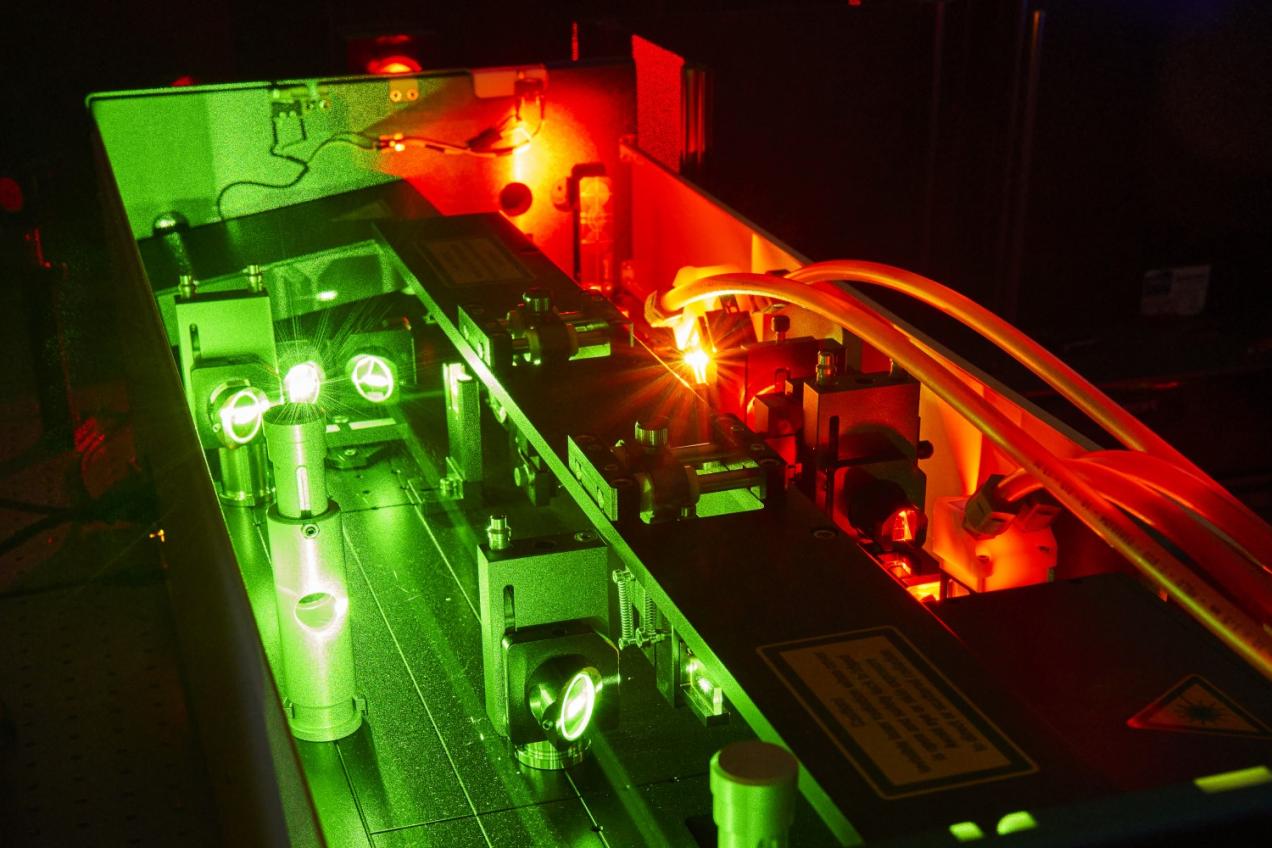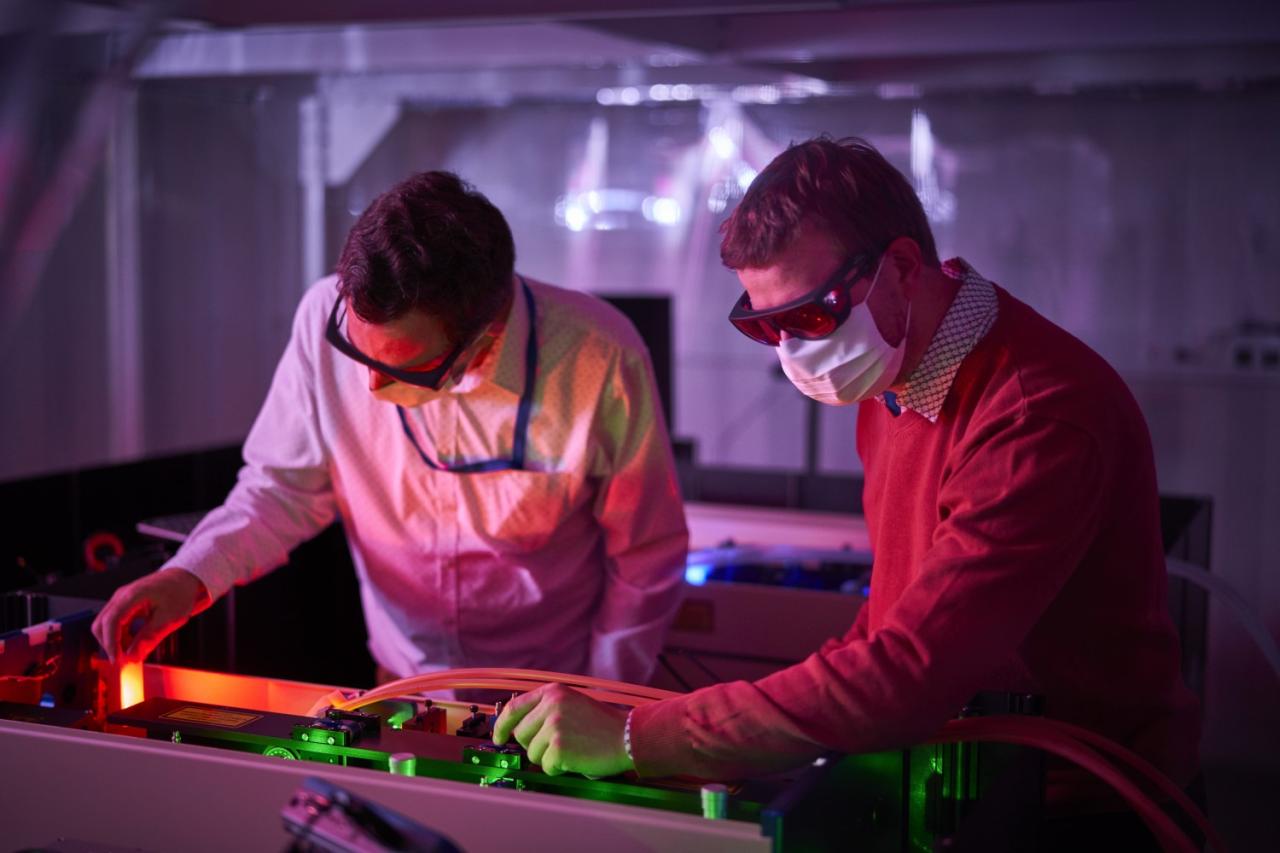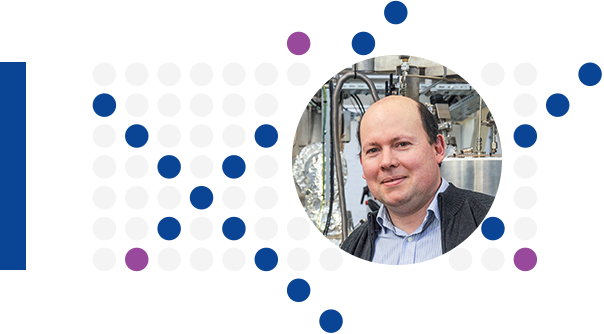SCK CEN decomposes atoms
Laser light rips electrons off the nucleus of an atom in order to isolate specific radioisotopes

In just one year, SCK CEN completed the construction of an impressive laser installation. It brings the nuclear research centre another step closer to its goal: the development and production of a new generation of medical radioisotopes. “These lasers will allow us to isolate specific, life-sustaining radioisotopes,” says Lucia Popescu, one of the driving forces behind the project.

With the MYRRHA project, the nuclear research centre SCK CEN is aiming to tackle a series of social challenges. One of the ambitions that SCK CEN wants to achieve is the development and production of radioisotopes for medical applications and fundamental research. In order to obtain these radioisotopes, SCK CEN bombards so-called ‘target discs’ with protons. The target discs are stacked in ISOL@MYRRHA's target container – a tube with a diameter of approximately four centimetres. As soon as a proton beam with an energy level of 100MeV shoots through the target discs, the radioisotopes form and evaporate. They begin to wander around, bumping into everything, until they find the exit of the target container. That exit is also the entrance to a thin transfer tube. That tube takes the radioisotopes to the next part of the ISOL installation. “Of course, which radioisotopes travel further is not based on chance. We select them carefully. Only the radioisotopes that we have in mind are guided through the installation,” says Lucia Popescu, an engineer at SCK CEN.
The selection is provided by laser light, which shines through a set of mirrors in the transfer tube. The researchers use two laser types. “Dye lasers and pump lasers,” clarifies fellow engineer Kim Rijpstra. The lasers initiate an incremental ionisation. “Electrons rotate on energy shells around an atomic nucleus. The dye lasers allow an electron to jump from one shell to another, which is further from the nucleus. Once far enough, a final laser beam catapults the staggered electron out of the atom. By stripping the atom of its electrons, it gains a positive charge. The atom becomes ionised and can then be accelerated and precisely controlled.”
Fingerprint of an atom
Just as each person has a unique fingerprint, each chemical element in the periodic table has its own electron configuration. The shells of each chemical element are different and the electrons are distributed differently among different shells. “The deeper inside the atom, the more energy it takes for an electron to jump away completely. By adjusting the colour of the dye lasers, we can identify which jumps will occur. This way, we aim our arrows at specific electrons and choose which specific atoms we encourage to travel further,” explains Kim Rijpstra. Then, the ionised atoms are accelerated in an electric field and separated by a magnetic field based on mass. At the end of the journey, the selected isotopes are collected.

Laser installation
Since the end of 2020, the laser installation that will sort the radioisotopes in the future has been in pride of place in the technical area at SCK CEN. For its design, SCK CEN worked closely with KU Leuven, one of the Belgian universities. Once the design was finalised, the parts were ordered. “When they were delivered in early 2020, we immediately rolled up our sleeves and got to work. After one year of hard work, the installation was ready. This achievement brings us another step closer to our target,” is the proud message. That target is 2027. From then on, the research centre wants to begin the development and production of a new generation of radioisotopes. There are still a few other milestones to tick off before that, though, the first of which is linking the laser installation to the ISOL@MYRRHA installation.
ISOL@MYRRHA: the beating heart for isotope production
The ISOL installation (Isotope Separation On-Line) is the beating heart of the Proton Target Facility (PTF), where the radioisotopes are created. These radioisotopes are used for medical purposes or for fundamental and applied research in physics and materials research. The unique feature of this installation is the intensity of the proton beam. This proton beam is 100 times more intense than in other European installations. This means that the nuclear research centre SCK CEN can produce more isotopes within its spectrum.

Making a real difference with elementary particles
For centuries, humans have been trying to unravel the complexity of the world, and science is the tool that helps to provide understanding and create order in the apparent chaos. Fundamental science is the engine for amassing knowledge and developing new solutions for applications with societal relevance. The enthusiasm and sense of constant wonder among our employees provide the necessary impetus to continue making progress.
Marc Schyns
Advanced Nuclear Systems
MYRRHA reactor vessel slims down
Renewed design combines safety and economic feasibility